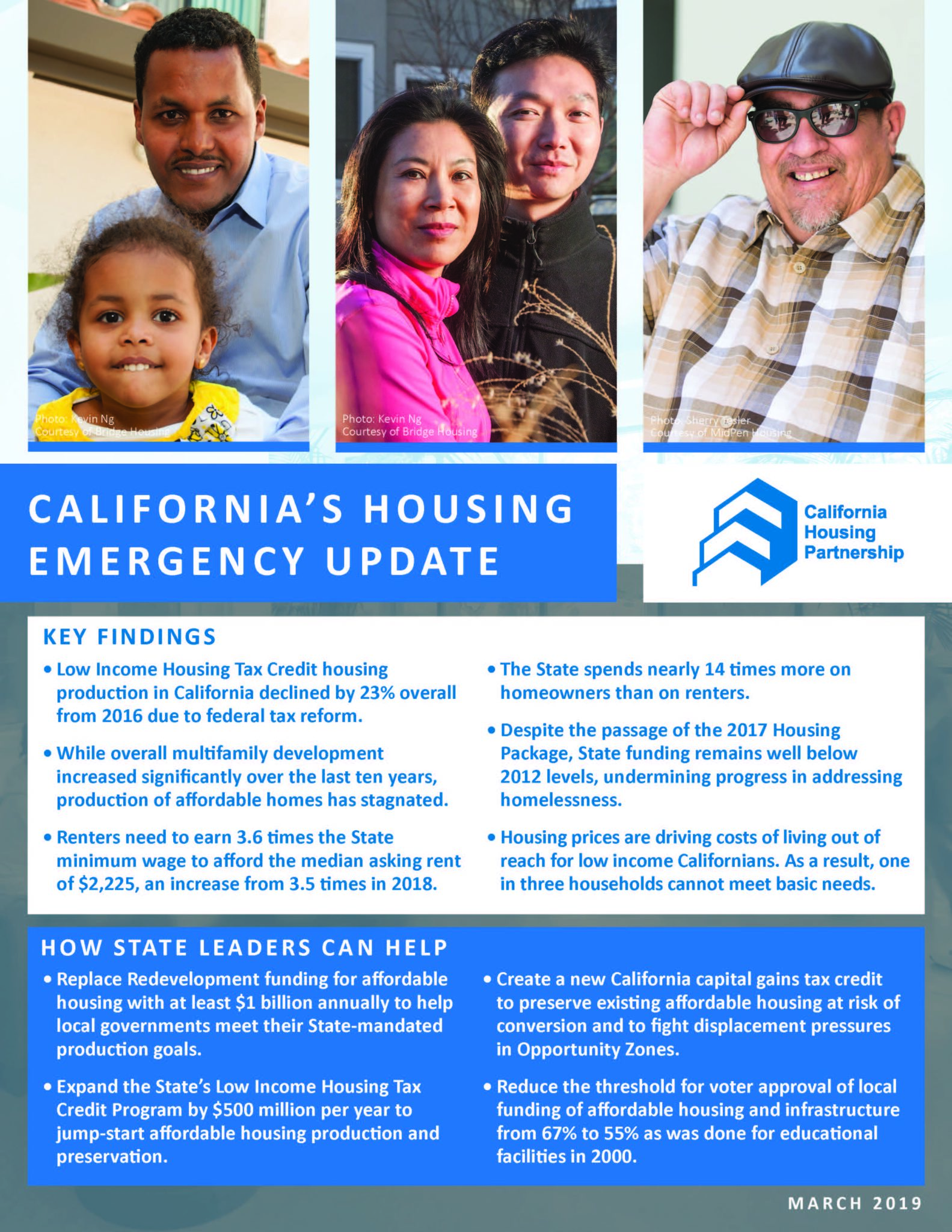
A new report from the California Housing Partnership shows that recent state initiatives designed to stimulate production of more affordable rental housing have yet to make a significant impact in reducing the shortfall of 1.4 million affordable homes needed or in housing the 130,000 Californians experiencing homelessness on any given night. California Housing Partnership CEO Matt Schwartz says, “It is unacceptable that one in three California households cannot afford to live here. The data in this report is clear that despite the Legislature’s passage of the historic 2017 Housing Package and a $20 billion budget surplus, California is still under-investing in affordable housing production.” While overall multifamily development has increased significantly, the current level of production is still nowhere near what is needed to meet the State’s annual goal of 200,000 homes. For low-income families the trend is especially bleak as the development of rental homes affordable to this population has continued to lag far behind, comprising only 10-15 percent of all multifamily permits over the last five years.
Other report findings:
- To afford the median California asking rent of $2,225, a household needs to earn 3.6 times the state minimum wage.
- Rent prices are driving cost of living out of reach for low-income California families – a household of three needs to earn $76,819 a year to pay for basic needs.
- Three out of four of the lowest income renters are spending more than half of their income just on rent, leaving little for food, transportation to work, and health care.
- The state spends 14 times as much subsidizing homeowners as it does renters; $879 per homeowner household versus just $64 per renter household.
The California Housing Partnership calls on state leaders to take the following actions in 2019:
- Replace Redevelopment funding for affordable housing with at least $1 billion annually to help local governments meet their State-mandated production goals;
- Expand the State’s Low Income Housing Tax Credit Program by $500 million per year to jump-start affordable housing production and preservation;
- Create a new California capital gains tax credit to preserve existing affordable housing at risk of conversion and to fight displacement pressures in Opportunity Zones; and
- Reduce the threshold for voter approval of local funding of affordable housing and infrastructure from 67 percent to 55 percent as was done for educational facilities in 2000.
Read the full report here.
